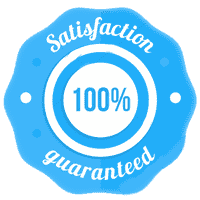- Home
- About Us
- Services
- Online Assignment Help
- Auditing Assignment Help Service
- Nursing Assignment Help
- Excel Assignment Help
- Advanced Economics Homework Help
- XML Assignment Help
- Strategic Management Assignment Help
- Logarithm Assignment Help
- Probability Assignment Help
- Matrices Assignment Help
- Commercial Bank Management
- Thesis Proposal Help
- Corporate Strategy
- Electrical Engineering
- Civil engineering
- Mechanical Engineering
- Electronics Engineering
- Financial Plan Development
- Research Paper
- Political Science Assignment Help
- Operations Management Assignment Help
- Computer Vision Assignment Help
- Commercial Bank Management
- IT Security Assignment Help
- College Essay Help
- Term Paper Help
- Medical Science Assignment Help
- Nursing Thesis Writing Help
- Religion
- Thesis Help
- Supply Chain Management Assignment Help
- Australia Assignment Help
- Cause and Effect Essay
- International Finance Assignment Help
- Statistics Assignment Help
- Computer Science
- Information Technology
- Bioinformatics Assignment Help
- Biostatistics Assignment Help
- Excel Assignment Help
- Taxation
- Research Proposal Help
- SAASU Assignment Help
- Auditing Assignment Help Service
- Workplace Learning in Finance
- Dissertation & Homework Help
- Custom Essay Writing Help
- Online Assignment Help
- Reviews
- Tutors
In the vast sea of academic assignments, a powerful hook is the lighthouse that guides your reader’s attention to your work. Like a skilled angler, you must cast a compelling line to reel in your audience and keep them engaged throughout your assignment. Whether you’re writing an essay, research paper, or any academic piece, a well-crafted hook can make all the difference between a captivating introduction and a lackluster start. In this blog, we’ll explore the art of crafting the perfect hook for your assignment and leave your readers eagerly diving into the depths of your work.
Understanding the Hook’s Purpose
The hook serves as the opening line or lines of your assignment, designed to grab your reader’s attention and pique their curiosity. It sets the tone for your entire piece and lays the foundation for what’s to come. Your hook should be relevant to the subject matter and be directly tied to your assignment’s main thesis or topic.
Know Your Audience
Before diving into crafting your hook, consider your target audience. Are you writing for a scholarly audience, your classmates, or a general readership? Tailor your hook to resonate with the specific group you want to captivate. Use language and references that will be familiar and appealing to them.
Types of Hooks
There are several effective types of hooks to choose from, depending on the tone and style you wish to convey:
- Anecdotal Hook: Start with a short and engaging story or anecdote that relates to your assignment’s topic. Human experiences often resonate with readers, drawing them into your work.
Example: “Imagine standing on the edge of a towering cliff, the wind tugging at your clothes, as you contemplate the secrets hidden within the earth’s geological history.”
- Surprising Statistic or Fact: Begin with a shocking or intriguing statistic or fact that is relevant to your assignment. This type of hook immediately captures the reader’s attention by presenting them with surprising information.
Example: “Did you know that over 8 million tons of plastic waste end up in our oceans every year, threatening marine life and ecosystems?”
- Provocative Question: Pose a thought-provoking question that challenges your reader’s perspective or makes them curious about the answer. This type of hook encourages the reader to think critically about the topic.
Example: “What if our perception of time is merely an illusion, and the past, present, and future coexist simultaneously?”
- Quotation: Use a powerful quote from a well-known figure or an expert in the field that relates to your assignment’s subject matter. A carefully chosen quote can add credibility and depth to your work.
Example: “As Martin Luther King Jr. once said, ‘Injustice anywhere is a threat to justice everywhere.'”
- Vivid Description: Paint a vivid picture with descriptive language, appealing to the reader’s senses and imagination. This type of hook creates a visual and emotional connection to your assignment.
Example: “The sun dipped below the horizon, casting a warm golden glow over the ancient ruins, each stone holding secrets of civilizations long gone.”
Timing and Placement
While the hook typically appears at the beginning of your assignment, you may also choose to use mini-hooks strategically throughout your work to maintain the reader’s interest. These can be used to introduce new sections or emphasize key points.
Keep It Concise
A hook should be concise and to the point. Avoid lengthy or convoluted sentences that may lose the reader’s attention. Aim to make your hook impactful and engaging in just a few words.
Revise and Polish
Writing the perfect hook may require several iterations. Don’t be afraid to revise and polish your hook until it truly shines. Test it on friends or colleagues to gauge their reaction and make improvements based on their feedback.
Conclusion
A well-crafted hook is the key to capturing your reader’s attention and setting the stage for an engaging academic assignment. By understanding the purpose of a hook, knowing your audience, and choosing the right type of hook for your assignment, you can draw your readers in and keep them hooked throughout your work. Remember, the hook is your opportunity to make a lasting impression, so take the time to craft it thoughtfully. With a compelling hook, you’ll cast your academic net wide, reeling in your readers and leaving them eager to explore the depths of your well-researched and brilliantly written assignment.
If you need assistance in writing hook for your assignment, fill up the form on the right and get instant assignment writing service.
We deliver a well-researched academic paper tailored to your specifications at a fair price while ensuring timely delivery. Our service is known for providing top-scoring, plagiarism-free research papers. Additionally, we offer unlimited revisions and 24/7 customer support as part of our commitment to quality.
So, don’t hesitate—place your order today and receive expert academic assistance instantly!





